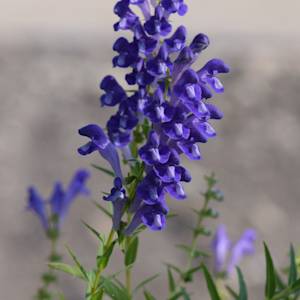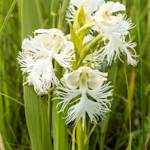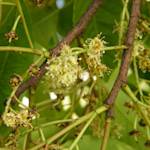Houpu Magnolia, Magnolia officinalis
21st Century • China
"With a sense of urgency inspired by the rapid disappearance of plant habitats, most researchers are focusing on the diverse flora of the tropics as the source of plant-based medicines. However...new medicines may also be developed from plants of the temperate regions of the world. Of these regions, China offers the highest floristic diversity and a more than two-thousand-year-old tradition of using plants as medicines." - Todd Forrest, Two Thousand Years of Eating Bark; Magnolia officinalis var. biloba and Eucommia ulmoides in Traditional Chinese Medicine China is the ancestral home of the Magnoliaceae family, with more than 40% of the species having originated in southwest China. The Houpu tree, Magnolia officinalis, is one of these native Magnolias, found in the subtropical regions of northern and central China. The fragrant bark of the tree has been used in medicine for over 2000 years; it's wide ranging pharmacological qualities include anti-microbial, anti-inflammatory, anti-cancerous, and anti-aging properties. The tree is threatened by over harvesting of the bark as well as habitat loss. This is part of a larger trend for magnolias, which despite being one of the most ancient families still extant, is now widely threated. It is estimated that 22% of magnolias are critically endangered and 41% are endangered.
Song, Chuangye, et al. "Habitat preference and potential distribution of Magnolia officinalis subsp. officinalis and M. o. subsp. biloba in China." Nature Conservation, no. 12, 12 Sept. 2019, pp. 93+. Gale Academic OneFile, link.gale.com/apps/doc/A599210706/AONE?u=nypl&sid=bookmark-AONE&xid=7914f838. Accessed 12 Jan. 2022. | Sánchez-Velásquez, Lázaro Rafael, et al. "Ecology and conservation of endangered species: The case of magnolias." Endangered Species. USA: Nova Sciences Publishers, Inc (2016): 63-84. | Forrest, Todd. “Two Thousand Years of Eating Bark; Magnolia Officinalis Var. Biloba and Eucommia Ulmoides in Traditional Chinese Medicine.” Arnoldia, no. Spring 1995, 1995, pp. 13–18. Biodiversity Library, www.biodiversitylibrary.org. Accessed 12 Jan. 2022.
Magnolia officinalis, wikimedia user Karlostachys. CC 3.0 creativecommons.org/licenses/by-sa/3.0/


Learn about Maya Lin’s fifth and final memorial: a multi-platform science based artwork that presents an ecological history of our world - past, present, and future.

Discover ecological histories and stories of former abundance, loss, and recovery on the map of memory.

Learn how we can reduce our emissions and protect and restore species and habitats – around the world.

See how art can help us rethink the problems we face, and give us hope that each one of us can make a difference.

Help make a global memorial something personal and close to home. Share your stories of the natural world.


